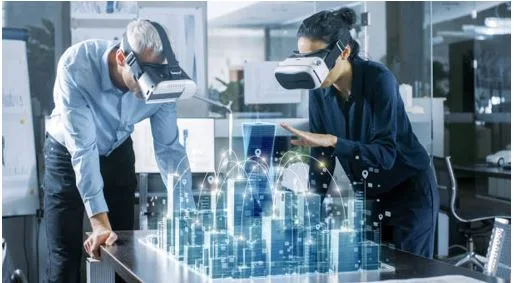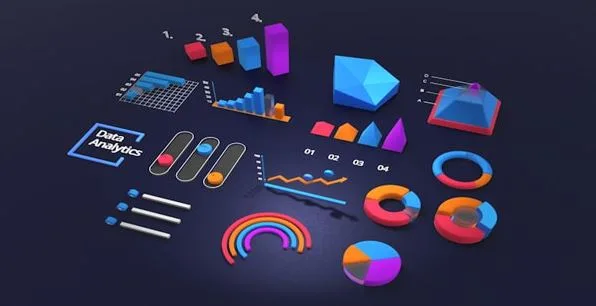The Future of Digital Interaction: Understanding Augmented Reality Models
Introduction to AR Models
In today’s fast-evolving digital world, augmented reality models — often abbreviated as AR models — are redefining how we perceive and interact with virtual content. By overlaying computer-generated 3D models onto the real world, augmented reality (AR) technology bridges the gap between imagination and reality.
These augmented reality models can represent anything — from furniture and vehicles to architectural designs and human anatomy. When you use an AR 3D model on your phone or AR headset, it’s like bringing a digital object into your real-world space. This seamless blending of the physical and virtual world is what makes 3D augmented reality experiences so captivating.
What Are Augmented Reality Models?
A reality model or augmented reality model is a 3D digital object designed specifically for use within an AR environment. These 3D models for augmented reality can be placed in real-world settings through smartphone cameras or wearable AR glasses.
For instance, an interior designer might use AR objects to preview how furniture fits in a room before purchasing it. A car dealership could display 3D augmented reality versions of new vehicles for customers to explore virtually. Even students can interact with augmented reality 3D models to study complex subjects like anatomy, astronomy, or engineering.
When users interact with AR 3D models, they gain a richer, more engaging experience compared to traditional images or videos. This interactivity makes augmented reality objects an invaluable tool in both education and commerce.
The Evolution of 3D AR and Reality Models
The concept of 3D AR has evolved dramatically over the past decade. What began as simple 2D overlays has now transformed into lifelike augmented reality 3D models that respond to lighting, shadows, and real-world movement.
As hardware and software have improved, AR 3D models have become more detailed, lightweight, and realistic. The ability to integrate 3D model augmented reality files into apps and websites has opened doors across industries:
- Retail: Shoppers use 3D models for AR to try on clothes, place virtual furniture, or test products before buying.
- Education: Students visualize complex topics using augmented reality 3D lessons.
- Healthcare: Medical professionals rely on AR 3D models to simulate surgeries and study the human body.
- Architecture & Design: Architects present 3D models AR of buildings, allowing clients to explore layouts in full scale.
In essence, reality models have transformed from a novelty to a necessity in today’s digital ecosystem.
Creating and Customizing AR 3D Models
Designing an augmented reality 3D model requires creativity, precision, and technical skill. Artists use powerful tools such as Blender, Maya, or Cinema 4D to sculpt 3D augmented objects, which can then be optimized for AR platforms like ARKit, ARCore, or WebAR.
Once created, these models are exported in AR-friendly formats — typically USDZ, GLB, or FBX — to ensure compatibility across devices. Developers can then embed these AR models into mobile apps or websites, allowing users to view them instantly without special software.
For those new to 3D design, there are many sources for free 3D models for augmented reality. Websites like Sketchfab, CGTrader, and TurboSquid offer extensive libraries where users can download 3D models for augmented reality or even get an AR 3D model free download to experiment with. These augmented reality downloads make it easier than ever to bring ideas to life without having to start from scratch.
Benefits of Using Augmented Reality Models
1. Immersive Visualization
Traditional 2D images can’t convey depth or scale. With augmented reality 3D models, users can move around and interact with AR objects as if they were real. This enhances understanding and engagement.
2. Cost-Effective Prototyping
Businesses can showcase 3D models for AR to test designs before manufacturing physical products. A 3D model AR prototype can save significant time and costs in product development.
3. Better Customer Experience
Retailers who integrate augmented reality models into their platforms give customers the confidence to make informed decisions. When users can visualize a 3D model augmented reality version of a product in their own space, conversion rates increase dramatically.
4. Educational Value
Students retain more knowledge when learning interactively. With AR 3D models, subjects like biology, geography, and physics become more tangible and exciting.
5. Easy Accessibility
Many augmented reality downloads are freely available, allowing both individuals and businesses to access high-quality augmented reality 3D model download resources at no cost.
How to Download and Use AR Models
Getting started with AR models is simple. There are multiple online repositories that offer AR model download free options for different applications. After downloading, you can import these 3D models for augmented reality into your preferred AR viewer or development tool.
If you’re experimenting, try an augmented reality 3D model download to test how it appears in your environment. Many 3D models AR can be viewed directly in browsers using WebAR, removing the need for complex installations.
For professional projects, designers often purchase or customize 3D augmented reality assets to ensure brand consistency and realism. These files can then be integrated into interactive product pages, mobile AR apps, or marketing campaigns.
Applications of Augmented Reality 3D Models
- E-Commerce: Virtual try-ons and in-space visualization of augmented reality 3D models help customers shop smarter.
- Education: AR 3D models make learning interactive, helping students explore virtual worlds and objects.
- Gaming: Many modern games use 3D augmented reality characters and environments to enhance immersion.
- Marketing & Advertising: Brands use 3D model AR experiences to create memorable campaigns.
- Architecture: Augmented reality objects assist in presenting full-scale 3D mockups of buildings.
- Manufacturing & Engineering: 3D models for AR simplify complex data visualization and product design.
The Growing Ecosystem of Augmented Reality Downloads
With the rise of open platforms and creative communities, accessing augmented reality downloads has never been easier. From AR 3D model free download collections to premium 3D models for augmented reality, the internet offers vast libraries suited for every need.
These platforms often allow customization, so users can modify textures, lighting, or animations. By downloading free 3D models for augmented reality, you can accelerate development cycles, test ideas quickly, and deploy engaging AR experiences without heavy investment.
The Future of 3D Augmented Reality
The next frontier of 3D augmented reality lies in realism and interactivity. With advances in AI and photogrammetry, augmented reality 3D models are becoming more dynamic, reacting to real-world physics, lighting, and even user gestures.
In the near future, reality models will seamlessly blend with AI-driven environments to create truly intelligent digital worlds. Imagine walking into a room where every AR object interacts with your movement or responds to voice commands.
Furthermore, as 5G and cloud computing mature, augmented reality 3D model download processes will become faster, allowing for real-time streaming of 3D models for augmented reality without needing to store them locally.
Conclusion
The era of augmented reality models is here — transforming how we see, learn, and engage with the world around us. From 3D model AR applications in retail to augmented reality 3D models in education, these digital assets are shaping the future of interaction and design.
Whether you’re a business looking to enhance customer experience, a teacher creating interactive lessons, or a developer exploring immersive technology, AR models open up endless possibilities.
Start today by exploring AR model download free options or download 3D models for augmented reality from trusted sources. The fusion of creativity, technology, and augmented reality 3D innovation is redefining what’s possible in both the digital and physical worlds.





